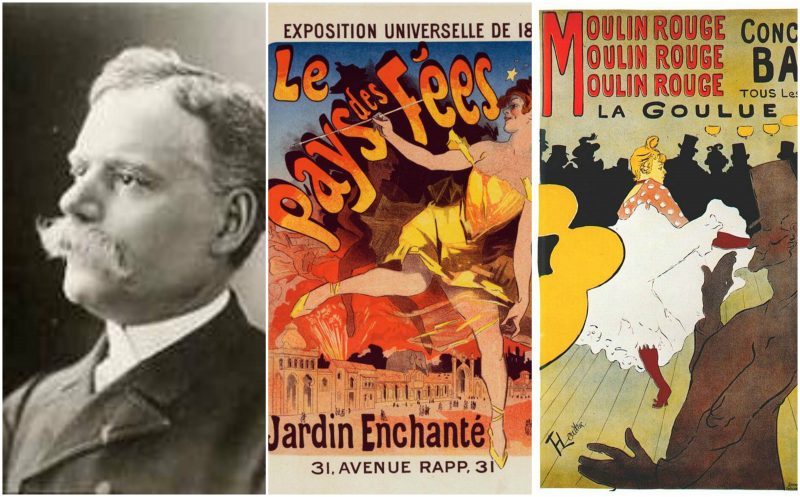Chéret’s lively ladies are instantly recognisable with their bright orange, green and blue patterns. The colorful posters that he created were more than just a tool for marketing purposes, Chéret succeeded in making a totally new art form and is responsible for the archetype of the modern day poster.
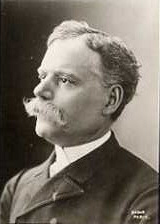
Born in Paris on May the 31st, 1836, the French graphic designer and poster illustrator has been called “the father of the modern poster” for his distinctive style. His family dabbled in artistic work as well, but Chéret had poor quality education, so he was self-taught and would often visit the museums of Paris to soak in all the various techniques of painting and drawing.
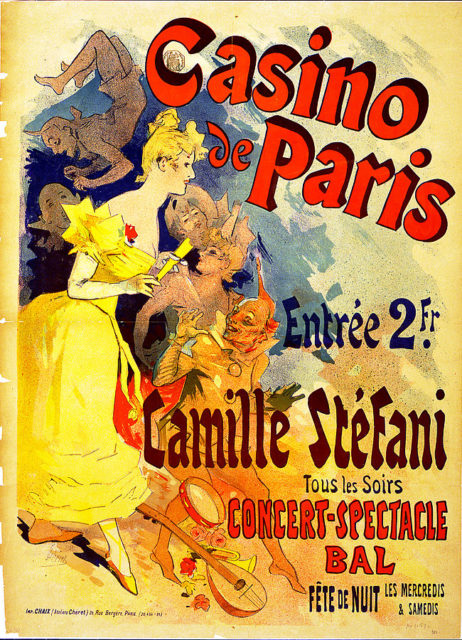
He was trained in lithography in London from 1859 until 1866, and he was highly influenced by the printing design that London offered and began creating these very vivid advertisements for many cabaret shows and theaters such as the Olympia, Théâtre de l’Opéra, the Alcazar d’Été, and of course, the almighty Moulin Rouge.
Chéret received his first major poster commission for the “Orpheus” operetta by Jacques Offenbach in the Underworld (1858).
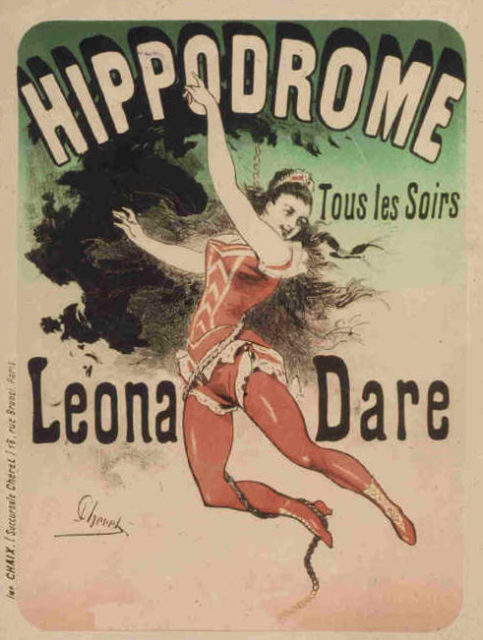
His opus also consisted of posters for products including beverages, medicines, lamp oil, liquors, perfumes, soaps, cosmetics and pharmaceutical products.
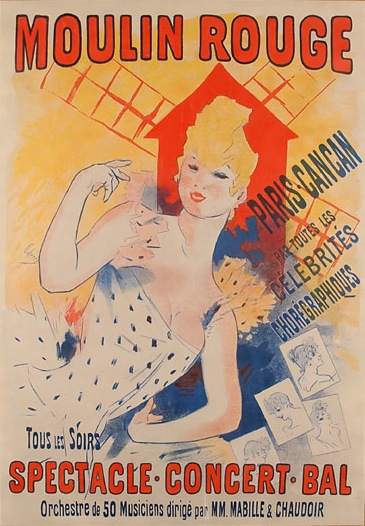
In time, he became a very demanded illustrator and his client list began to include wealthy manufacturing businesses and railroad companies. He owned and managed his own firm in order to maintain artistic control and establish an innovative design approach.
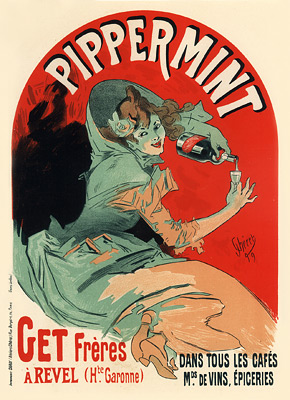
Despite a French law which demanded posters only be placed in designated areas in 1881, an entire industry of poster designing was created, as many advertisers tried to thwart the government’s attempt at reducing the appearance of posters throughout the streets of Paris.
Every poster required a tax stamp to indicate that a fee had been paid for the right to post it. Based on square footage, the tax led to the adoption of standard sizes. Advertisers worked with artists, printers, and posting companies to create, post, and maintain the poster on the street.
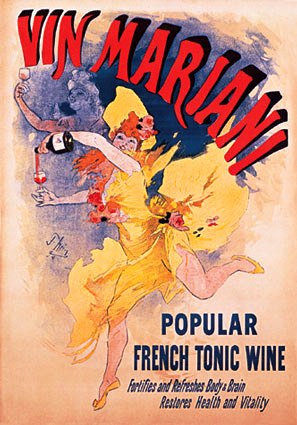
His style was detailed in comparison to the other advertisement posters, with obvious depictions of Rococo art and a cheerful color palette.
Jules’ work was distinctive because of his humorous and free-spirited displays of females that were scantily dressed, adding to the notion of the general liberation of women from the prudent moral norms of the 19th century.
The women that Chéret was drawing were called “Cherettes”, often portrayed in joyous and elegant splendor, heralding a more liberal nuance where women were freely able to engage in activities that were frowned upon and they were unburdened to smoke and wear low-cut bodices.
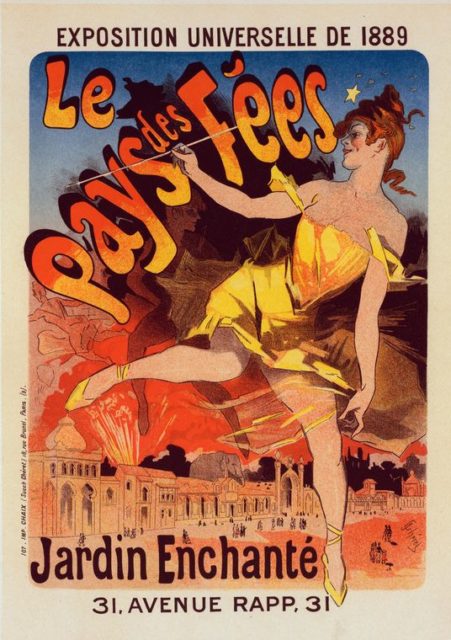
His technique, unlike the illustrators that copied poster designs onto a stone by other craftsmen, used spirited brush lines, stipple, crosshatch, and soft watercolor washes to create an image and worked directly on the stone.
His style evolved typical Victorian graphics with complex decoration to an even simpler approach in which the central figures would dominate, along with handwritten title lettering and indicative textures.
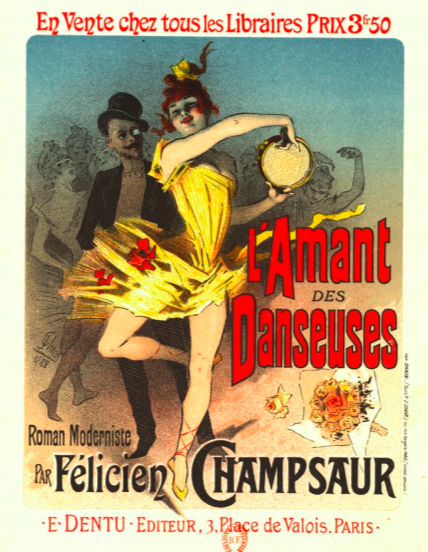
Chéret created the Maîtres de l’Affiche collection in 1895, an art publication of high importance that involved smaller reproductions of the best works of many Parisian artists and inspired a new generation of poster designers and painters like Charles Gesmar, Alphonse Mucha, and the famous illustrator Henri de Toulouse-Lautrec.
One can say that he was an old contributor to ignite the spark of the Art Nouveau movement in Paris.
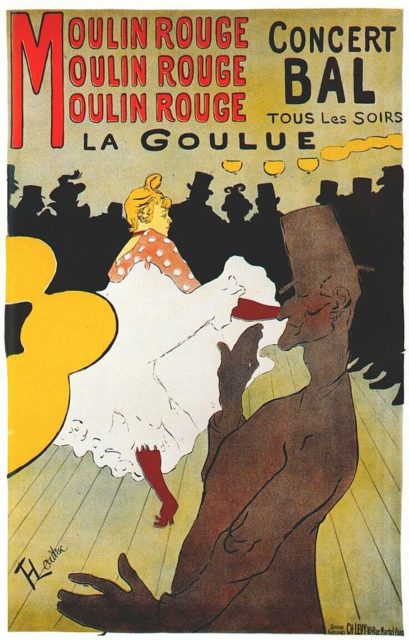
Chéret retired to the pleasant climate of the French Riviera at Nice and died in 1932 at the old age of 96. He was interred in the Cimetière Saint-Vincent in Montmartre.
Although he used his illustrations and posters to pay his bills, they garnered him much attention and earned him respect in the art community of Paris, for which he is remembered by today. He was awarded the Légion d’honneur by the French Government in 1890 for his outstanding contributions to the graphic arts.
His unsurpassed ability to color and blur the lines between reality and fantasy appointed his title as the “Master of Lithography.”
